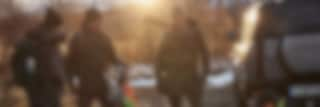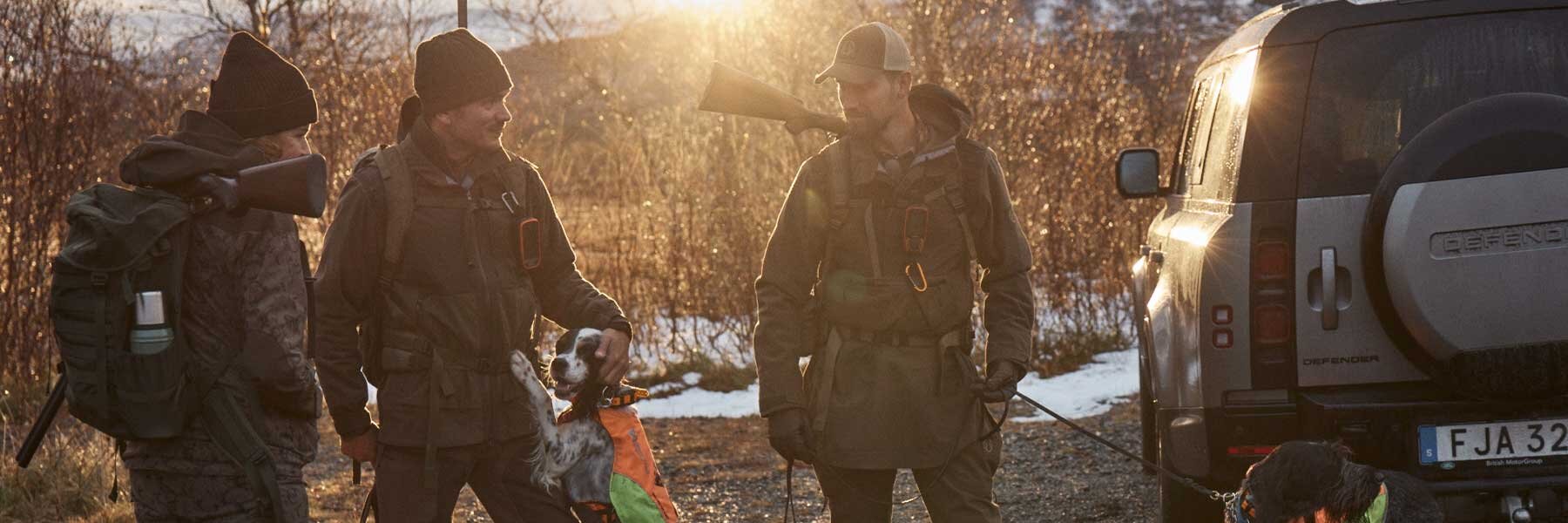Nature and its inhabitants – that’s what drives us. Making it easier for people to get outdoors, hunt, shoot, and enjoy nature – that’s our goal.
By offering well-considered quality products, we believe that more people will get out into the amazing nature that we all have access to. Not just once, but maybe even as a lifestyle. We always treat animals with respect, and have a conscious approach to hunting and shooting that’s all about preserving wild animals for future generations. We are conscious that production and sales have a negative impact on the environment, but we strive continuously to learn how to minimize that impact and make the best possible use of available resources. Quality, fashion, and authenticity permeate everything we do – including sustainability, which is an integral part of every decision we make.
The product
The product is the heart of our operation. In the concept and design phase of a new product, all kinds of decisions are made that have a major influence on the product’s impact in production, and also in use. We believe in quality, in making timelessly designed products that last a long time for the people who wear them. Garments that become favorites for many years to come.
Product development takes time. An idea turns into a sketch, which become a prototype, which then has to be tested and evaluated. We don’t rush our products, they are all made for a specific purpose.
Chemicals
We work in close collaboration with our material suppliers in terms of quality and function, but also when it comes to chemical content. Our products comply with all laws and regulations on the markets where they’re sold – we regard this as a minimum requirement, naturally. When we become aware that a particular chemical has a negative effect on health and/or the environment, we question why it is needed, and exclude or replace it wherever possible. One example is our process of phasing out Per- and Polyfluoroalkyl Substances (PFAS) in our water repellents. Water repellence in our outerwear is crucial: It makes sure that rain beads off. It also ensures that the garment retains its low weight and flexibility, and that the wearer stays nice and comfortable, even when it rains. We have replaced the impregnations in most of our products, and are working hard towards the goal of having no PFAS at all in our impregnated products by 2023.
Reducing our use of raw materials – We are constantly striving to reduce our impact, and the use of resources is an important part of this. One way we are approaching this is to use recycled material in our products. A lot of our polyester has now been replaced with recycled polyester. We are constantly looking for new materials that entail lower resource consumption, both when it comes to using the raw materials themselves, and also using more resource-efficient manufacturing processes.
Making clothes involves a high percentage of material waste in production. We maintain a close dialog with our clothing suppliers on how we can minimize wastage. When waste does arise, we think of it as a resource and find a use for it. Examples of products made from leftover material include Elemore and Dovre.
Production
Having excellent business partners make our clothes is hugely important, not only to achieve the right product quality, but also to ensure they understand the importance of sustainable production. We have a close partnership with just a few clothing producers in Asia and Europe. We have been working with some of them for many, many years.
Code of conduct
We have a Code of Conduct which our suppliers have all signed. It is very important to us that working conditions are good, and that our business partners share our goal of reducing impact as far as possible. And the process does not end with a signature: It is a constantly ongoing process to meet the social and environmental challenges that textile production presents.
Care and repair
The right care is an essential aspect of ensuring that clothes last a long time. Laundry – Only wash your garment when it really needs it. Machine washing adds wear to a garment, and is also resource consuming. It is often enough just to wash the soiled area, or to air the garment to freshen it up. Our care instructions show how best to look after each garment. Repair
We develop high-quality products that should last a long time, but of course accidents do happen. Fabrics can get a hole in them, buttons can fall off, and zippers can get stuck. We don’t want this to be the end of the product, so here are a few tips:
FabricA spark jumps out of the fire and makes a hole in the fabric. A repair patch, simply applied with glue, can repair the hole and extend the garment’s life. These are sold at many well-stocked hunting and outdoor stores. If you prefer and are able to stitch the fabric, please feel free to contact us at hello@chevalier.se
Buttons and accessoriesUnfortunately, buttons do sometimes fall off. Our shirts all have a spare button, either inside the placket or attached to the care instruction label inside the shirt. The spare button can be stitched on using a needle and thread. If you don’t have a spare button or some other accessories, such as a buckle, for example, please contact us at hello@chevalier.se
ZipperAfter long-term use, zippers can sometimes become worn and start getting stuck. This is usually because the slider has become worn or broken. A broken zipper can often be fixed with ZlideOn. ZlideOn is a new slider, that simply clicks into place without needing to get a whole new zipper. ZlideOn is available.here
Sustainability is part of our every day here at Chevalier, and we constantly strive to improve. And as things develop, we are working to take even more important steps in the right direction.
Chevalier is part of Open Air Group. Read more about our sustainability work in the Open Air Group 2022 Sustainability Report Sustainability Report 2022Sustainability Report 2021
